Here are some of the books I’ve managed to read so far in 2022
- Well Designed
- From Poverty to Power by James Allen
- The Housekeeper and the professor
- Scientific Healing Affirmations by Paramahansa Yogananda
Here are some of the books I’ve managed to read so far in 2022
Earlier this week, Twitter rolled out their stories feature (called Fleets) in India. While Twitter first rolled out Fleets in Brazil in March-2020, India is the third market (Italy being the second) where the feature is now available.
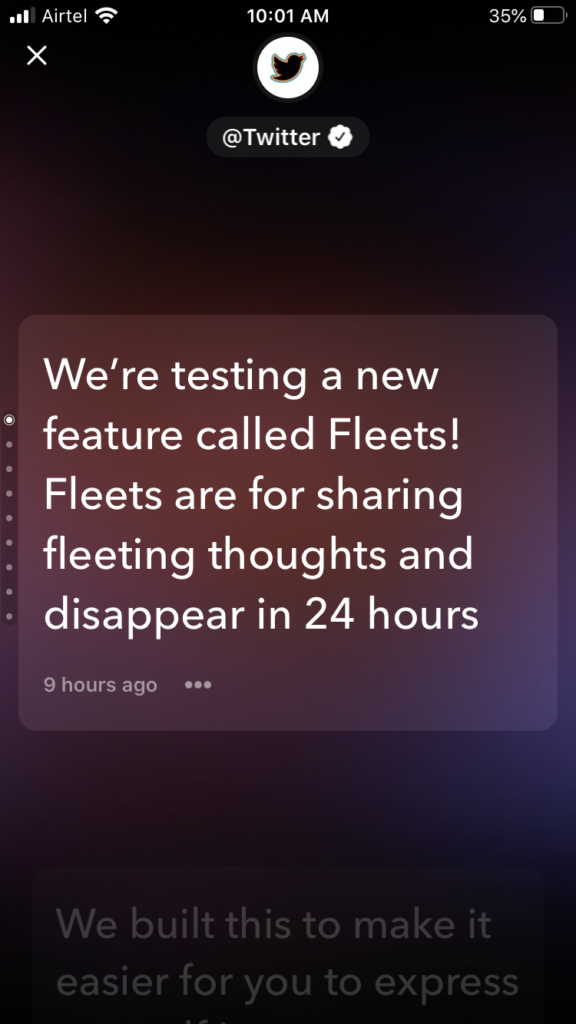
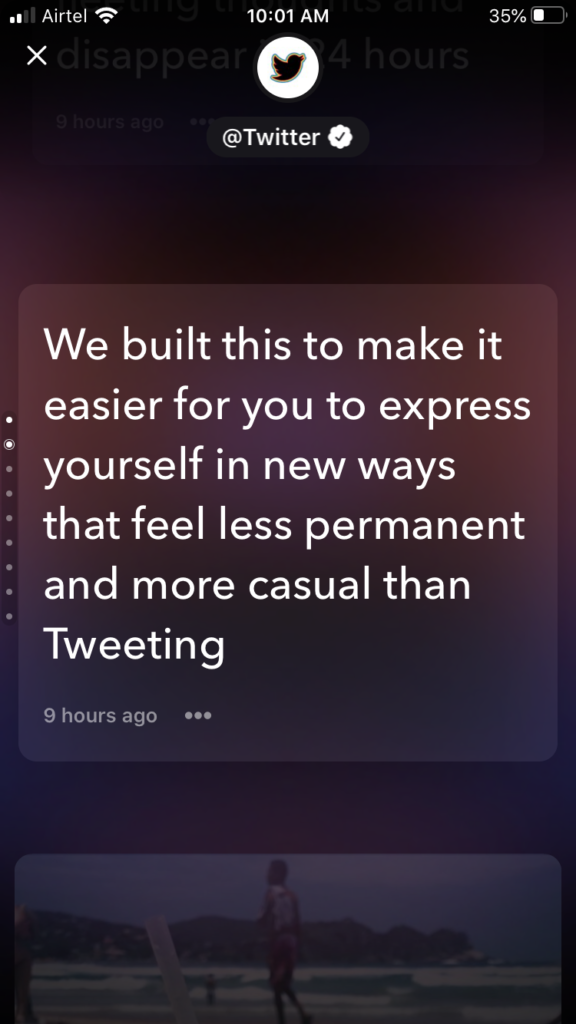
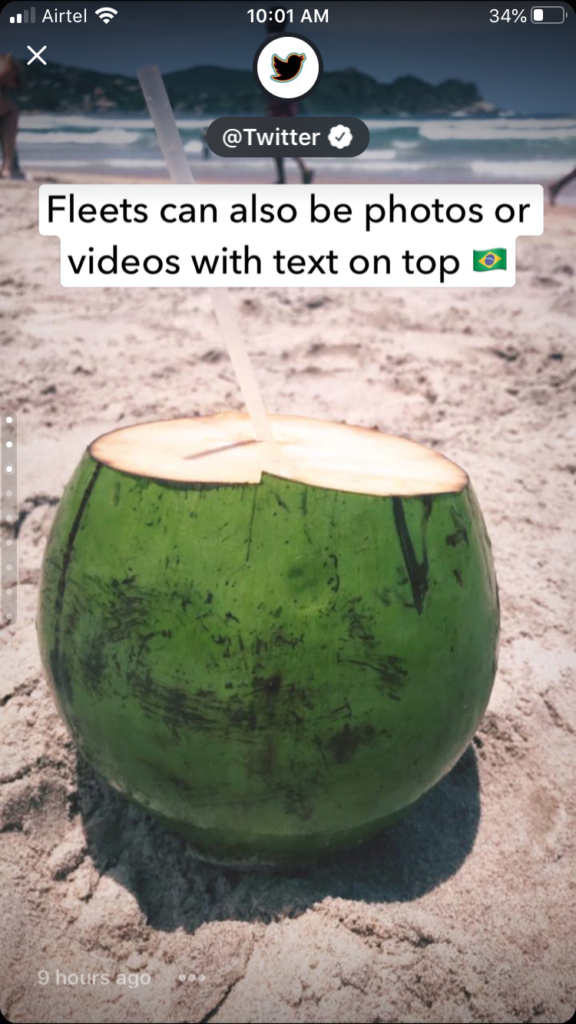
While they might seem like a not so old addition to the world of Social Networks, Stories were first introduced by Snapchat in late 2013.
For Snapchat, stories was a dream feature which was off to terrific start and became their most popular feature eclipsing snaps within 8 months of its launch. In April 2014, 500 million stories were viewed in a day and that number doubled to a billion stories viewed per day by June 2014. Snapchat DAUs grew from less than 40 million in Oct’13 (when stories launched) to 153 million by Oct’16.
Below is a short video by Evan Spiegel explaining Snapchat, it also covers briefly what stories are, ‘They are a collection of snaps from a day, in chronological order, this is different from a feed in most social media networks which are in reverse chronological order’
While Snapchat had a clean runway for almost 3 years with stories, its success caught attention of their biggest competitor Instagram which blatantly (but rightly so) copied and launched stories in Aug 2016.
Instagram Stories became a massive success. Just two months after its launch, it had 100 million daily active users, a number that doubled to 200 million by April 2017 and 250 million by June 2017, figures that dwarfed Snapchat’s 166 million daily active users. — Wired (2018)
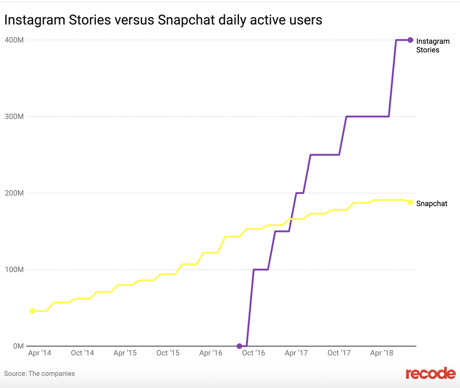
The power and future potential of stories (and desire to stall Snapchat’s growth) was not lost on Zuckerberg, who launched an all out attack against Snap by integrating stories on all their products starting with Instagram (Aug’16), followed by Facebook Messenger (Sep’16), Facebook App (Jan’17) & Whatsapp (Feb’17).
After trying at least half a dozen times to steal Snapchat’s thunder, stories did the trick. By Early 2018, each of facebook’s products had more DAUs than Snapchat
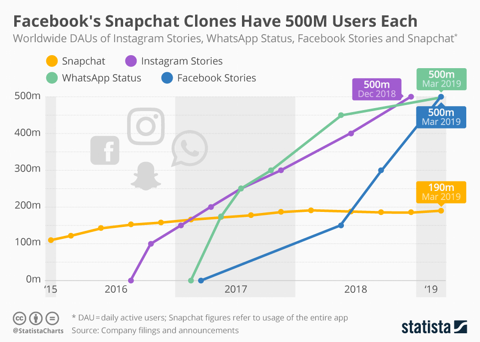
For the first 2.5 years or so since they first appeared, Stories went largely unnoticed but that changed after Facebook integrated them in their portfolio apps.
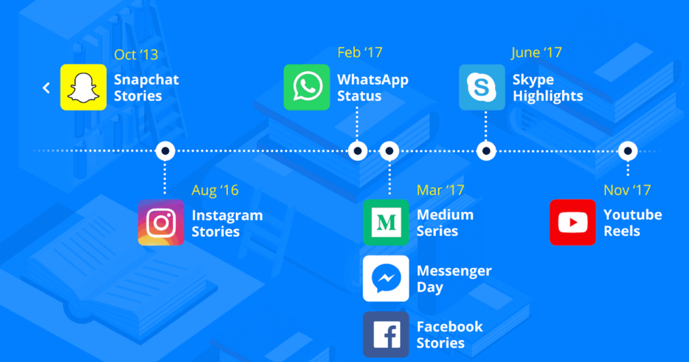
Like most things in life, blindly copying doesn’t always work. Skype rolled back it and Youtube stories never really took off. The reasons for it not working could be vastly different in both these cases
2. Stories Everywhere: While more and and platforms were trying to incorporate stories format for themselves to increase content creation and more user engagement. Snapchat decided in Apr’19 to allow stories to go beyond their walled garden by launching ‘Stories everywhere’. They later enhanced it further by having ‘App Stories’, powered by Snapkit, to be posted to over 3rd party apps such as Hily, Triller & Squad.
Perhaps, this could be a trend which Facebook and others also follow
As of today, Stories are a primary way in which users share, consume and engage with content across different apps. There’d would be around 1.5 billion users around the world that create or engage with stories.
As of today, Stories are a mainstay in the online ecosystem with varying degrees of success. Let’s take a look at what makes stories tick.
The stripped-down format of Stories offers users the ability to share what’s happening or what they are thinking in the moment in a raw, authentic way . This gives users an opportunity to move away from the need to carefully curate their posts.


But, this seems to be changing now. During Q1’20, Twitter registered highest increase in their DAUs in the last 5 years.
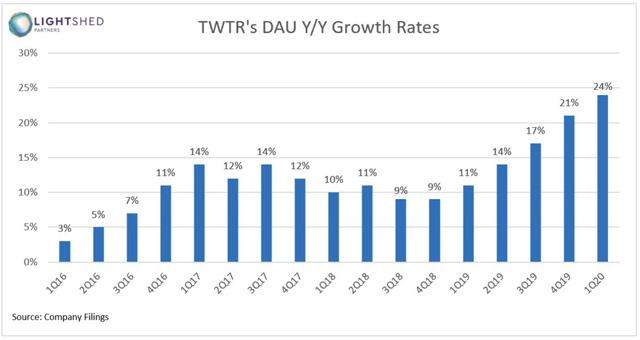
While user growth is great, a core problem for Twitter is monetizing its users. During Q4’20, their revenue growth was only 11% against user growth of 21%. While Twitter has been actively trying to fix this, with the release of Fleets there’s a good chance of this happening.
For all the (small but) premium audience Twitter attracts, it’s ability to monetize them isn’t even half as good as Facebook.
I spend 5X the time on Twitter as compared to all other social media sites combined but I can hardly remember being targeted by a relevant ad. It’s that scarce. Similarly, when it comes to running campaigns, Twitter never got to the consideration set in most app install I’ve done, seen/heard about.
(Big Audience -> Data Collection -> User Profiling -> Ad Targeting -> UX to drive installs/transactions) * Repeat
All of this has been a challenge but Fleets could just be light at the end of this tough path to better monetization.
The Opportunity:
While I’m quite bullish of Fleets being a great addition to Twitter and wait to see how things unfold, I’d love to know what do you think.
India has 341 confirmed cases of the Corona virus infection (344 as per this) as I write this, we are having a Junta Curfew across India and even had a 5 Baje 5 Min Clapping and Banging Thali session.
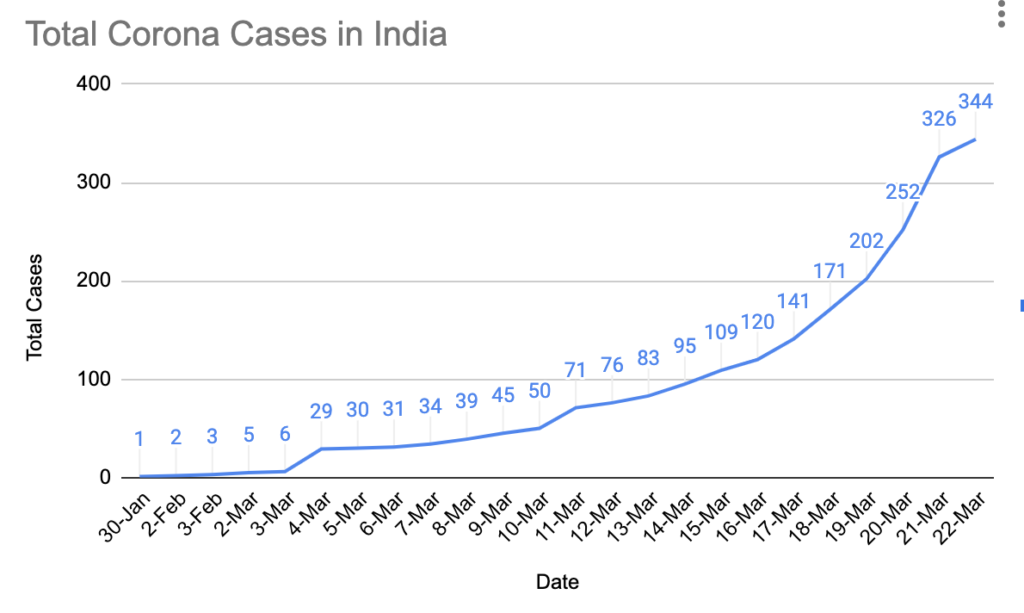
In 10 days since I wrote “Covid-19 Outbreak – Do You See The Risk?” the number of cases has increased more than 5 fold.
It took 17 days for cases to reach first 100 confirmed cases, 5 days for the next 100 and under 3 days for the next 100. Digest that for a second.
Was this unanticipated? Not really. Given the rate of spread of virus across the world especially China, Italy, Iran & USA this shouldn’t come as a surprise.
While authorities might not have been that pro-active at taking measures to control the spread and planning to prepare for the pandemic they are still a bit early (if you go by number of confirmed reported cases) to act.
Countrywide Shutdown Status

As you can see in the infographic above states across the country have shut down education institutes, cinema halls/malls, religious gatherings, restaurants, weddings and parks.
While the developments above have been unfolding over the last few days, just today the following major developments were announced
Today’s Announcements

These enforcements are unprecedented but absolutely essential to control the spread of virus.
I’m not an expert by any means but IMHO there are the following aspects to the corona pandemic
Data: Ministry of Health and Family Welfare launched a section on their portal for Corona Data and some advisories issued by the government.
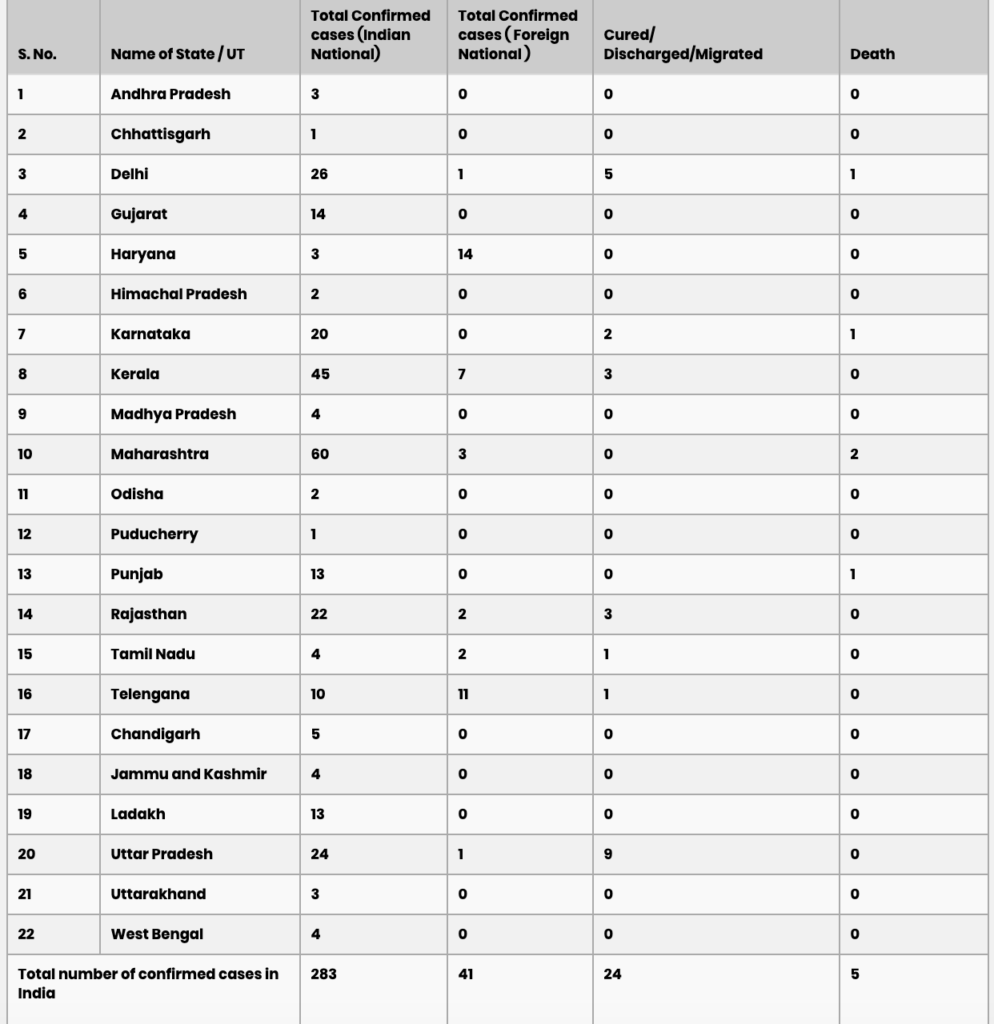
While the data is good, it’d be great to have more details around the same and most importantly around testing. Singapore for example shares patient level data which enables creating detailed dashboards like this one
This not only helps in analysis but also tracing and creating awareness about spread of virus across demographics/regions. Sharing data around tests being done across cities would clear up a lot of things. Perhaps the criteria for testing could have been relaxed and private sector roped in a bit earlier.
Prevention: I support all the initiatives taken to prevent ‘community spread’. The sooner we take drastic steps, the better. Now that we are officially under lockdown, it should run for at least 6-8 weeks (April end) given that there’s a months gap between lockdown and peak in confirmed cases. In parallel, we must continue to spread awareness on hygiene, social distancing etc, test aggressively and ensure strong quarantine measures for confirmed cases.
Treatment: This is the part where currently there’s as much information out there as should be. While we limited confirmed cases, this is the best time to learn from other countries and scale up our healthcare infrastructure to accommodate a spike in patients. From adding more hospital beds, converting buildings to hospitals, providing protective gear for healthcare professionals, expediting research & development, inducting more people in the medical workforce, arranging medicine, ICU beds and ventilators. A lot needs to be done across states in this departments. This should be done on priority and information shared with publick
This interview by Dr Ramanan Laxminarayan with Karan Thapar is quite informative
Rebuilding: While the impact on lives will be massive, a lot of effort will have to be put on the economic front. The entire machinery has come to a grinding halt. Some industries like Airlines, Hospitality, Entertainment are seeing never before drop in business activity. Those along with the people at the bottom of the pyramid and micro business owners will need a lot more help in getting by till normalcy returns and some support after things normalize (France suspended utility bills, rent for struggling SMBs)
A lot many concrete steps should be announced asap to avoid cascading events of the drop in the economic activity.
In addition to this, a lot of initiatives should be taken to ensure minimal disruption in supply chain for critical good.
Preparation: While we were caught by surprise this time and given that viral outbreaks aren’t going to go anywhere soon, it’d be wise to learn from this experience and prepare for future outbreaks once we are able to contain Covid-19. Setting up dedicated departments/teams supported with funding and other assistance to enable them to gear up for coming years.
At an individual level, you only have one job, Stay the *** home.
Hope over the coming weeks we make progress on above mentioned lines, minimize the damage and get past this disaster.

I first shared my apprehensions about the breakout of Corona Virus today morning in a post and the past 12 hours have been quite eventful already.
Global
India
Rest of The World
1) Italy’s confirmed cases count has crossed 12,500 (2313 cases in a single day) and 800 deaths (196 deaths in a single day)
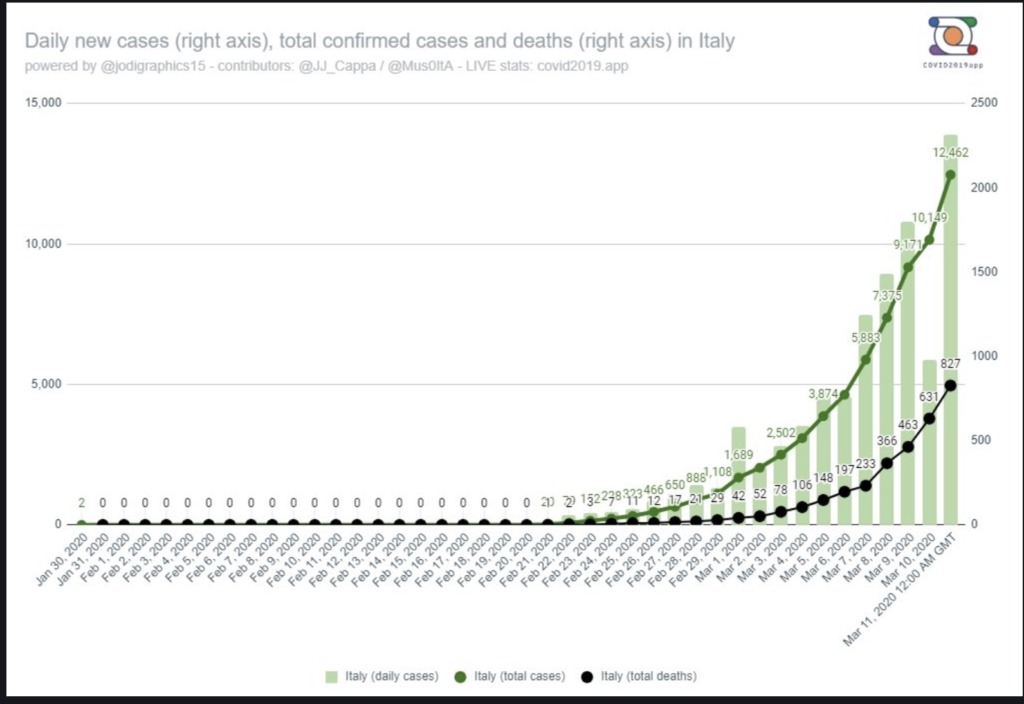
During the SARS outbreak (2002-03) I was in engineering college and have no memories of it. Also, TBH I don’t remember much about the deadly Swine Flu which killed over 200,000 people worldwide.
If I think about it, I guess having not to read/think about critical events like these isn’t all good as it could lead you to underestimate their severity.
As I write this post, Coronavirus cases worldwide have crossed 115000 and has killed over 4200 people. As per WHO, Covid-19 is close to a pandemic
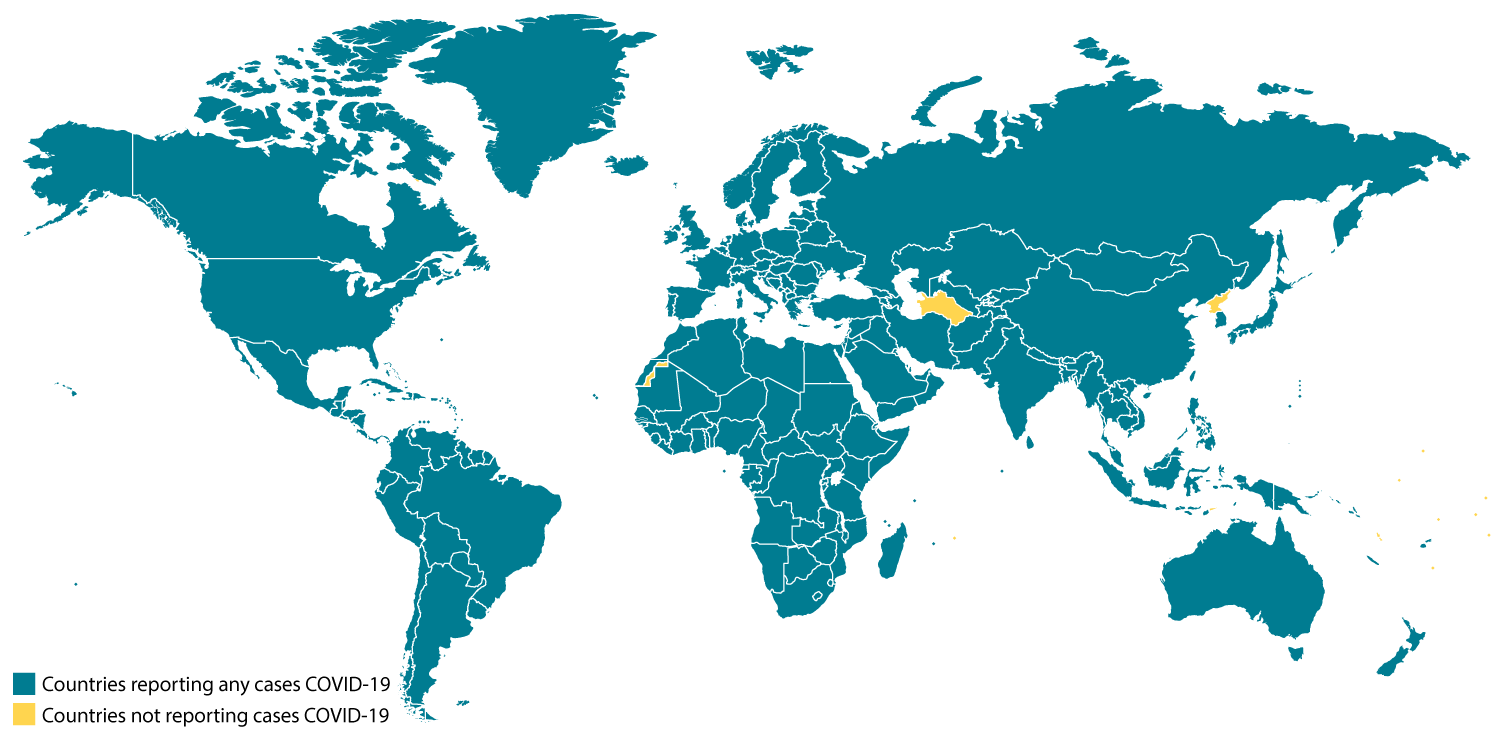
The count of confirmed cases in India stands at 62 as of 10:20 AM today. (2 deaths?)

It is anybody’s guess on how this graph would look from here.
PS: It would be fair to assume the actual numbers are significantly higher

The gif above conveys that bulk of the damage from COVID-19 can be avoided if we are able to spread out the occurrence of confirmed cases just around the capacity of our healthcare systems to handle. Anywhere in the world where that hasn’t happened has lead to massive damage to human life (Earlier Wuhan and now Italy).
No one would argue that health care infrastructure of India is capable to handle a massive outbreak like Wuhan (or Italy) and knowing the innumerable inefficiencies in our systems it is super scary to think how easily things can turn out of hand.
Some of the steps the government is taking to prevent an outbreak
While government is doing it’s bit (and we can debate how effective they are at it), what might be more important for us is what we do to stay safe.

Why Worry?
“Individual precaution does not scale to collective precaution…. Hence one must panic individually in order to avoid systemic problems.” – Nassim Taleb.
I feel super anxious these days, maybe because I have old parents and a young kid, or maybe it’s just me being me.

I guess the standard bell curve distribution holds true in this case too. While a smaller percentage would either be operating with minimal concerns/precautions as if nothing has changed (Holi toh khelenge hi) or taking extreme measures to stay safe, the majority would be split between worrying about the spread of virus and trying to make a living/lead normal life.
At a personal level, I’m trying to make a switch from B to C to the extent possible.
(Avoiding malls/gym/metros to begin with) and desperately trying to convince rest of my family.
Things we can and must do
While this might appear as fear mongering or unnecessary panic to some, the way I’d like to think here would be in terms of Unforeseen Risks.
Risk is complicated, which is why we’re not great at dealing with it. It’s more than just something bad happening. How risky something is depends on whether its target is prepared for it.
“Risk is what’s left over when you think you’ve thought of everything.”
Additional Reads (Will keep updating this list)
Short Reads
Long Reads
Videos & Podcasts (Will Update Soon)
The trigger for this post was this interesting tweet
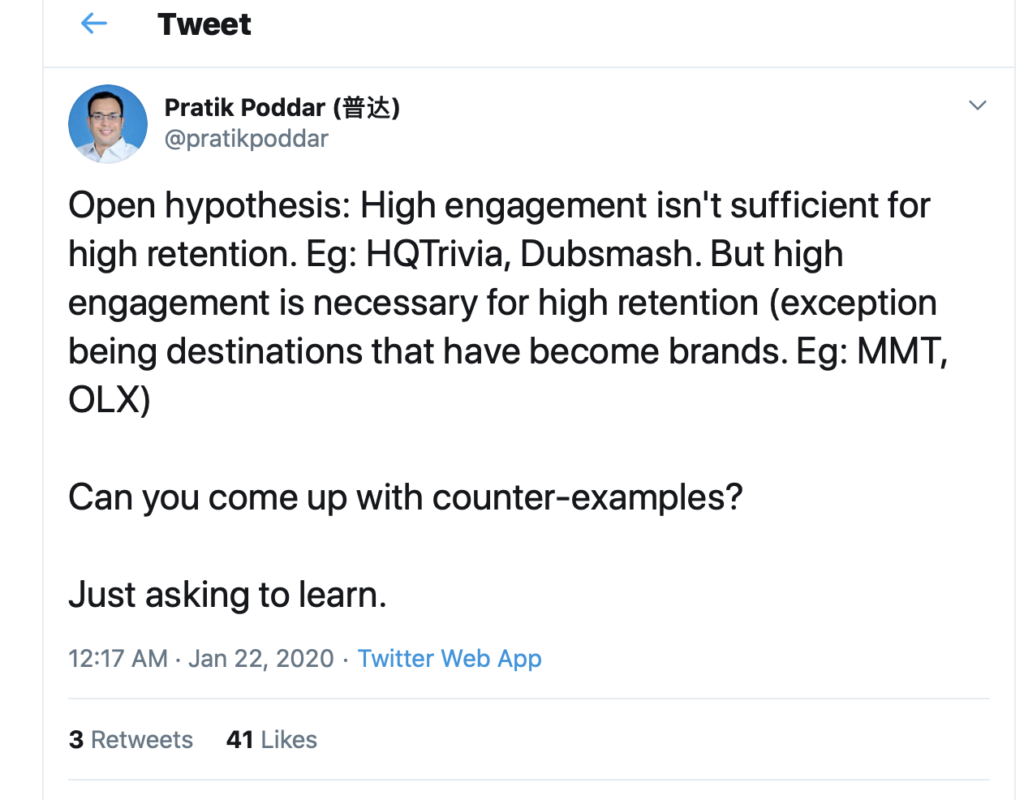
An inquiry into this question leads to a perspective on how to view engagement for your product. This perspective will help you decide your engagement and retention strategy effectively.
To dig deeper, let’s start by classifying various products into categories
I’ve tried to club all apps into these four broad categories for simplification. Now you have to identify in which category does your product fall under.
Let’s consider some examples mentioned in the discussion on the tweet above and map them to categories

By virtue of the category to which your product belongs there will be a potential engagement frequency for it.
Potential Engagement Frequency: Number of times a product can be used over a period of time.

* This frequency is for usage of the core product functionality, the same can be increased by adding more features.
Is High Engagement a necessary but not sufficient condition for Retention?
Not really. While Engagement is strongly correlated with Retention, neither is it necessary for nor does it guarantee Retention.
To understand why that’s the case let’s try to list down other Influencing Factors that impact engagement and retention across products
If you look at any product from these two lenses (categories and influencing factors) you would be able to understand if/where does engagement results in retention and where it doesn’t.
Note: Retention is significantly dependent on the products ability to reliably deliver on the core needs and its stickiness
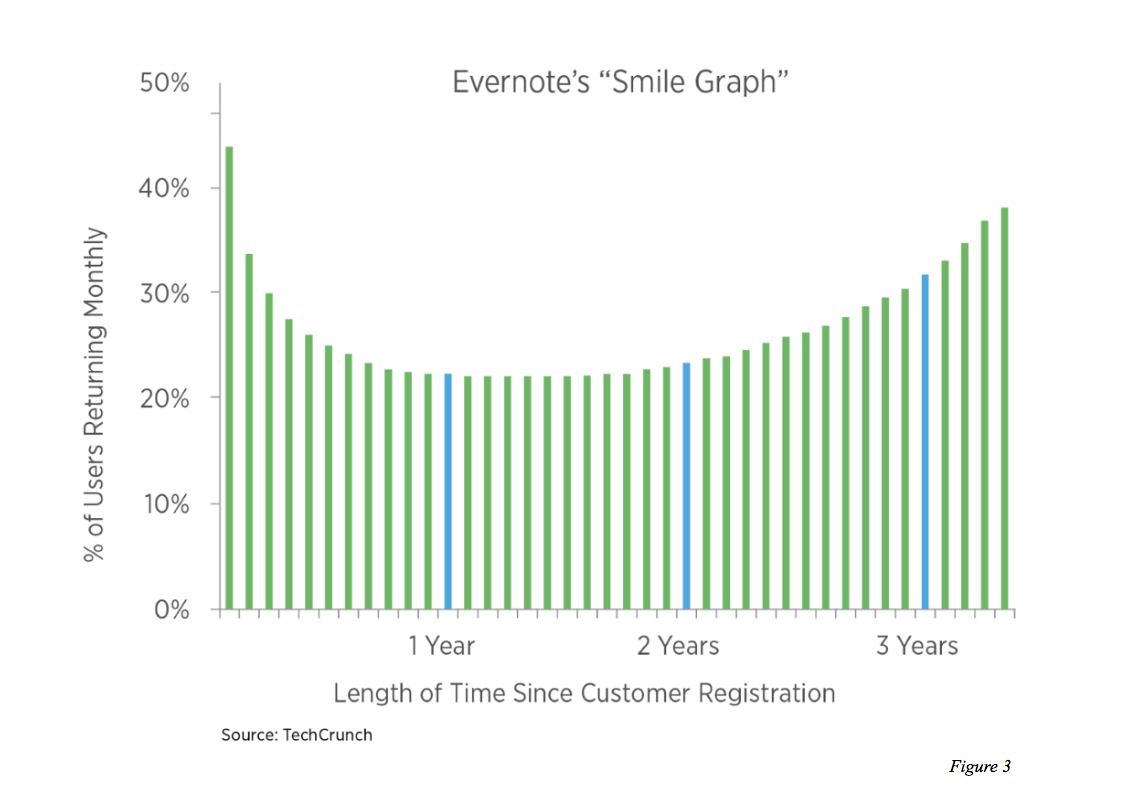

4. Transactional/E-commerce & Payments – For this category engagement could be a
function of frequency of need and incentives and retention could be a function of
consistency of experience. Here figuring out the ‘Potential Engagement Frequency‘
and % adoption from that is a good measure. For ex: Uber measures and tries to
improve their share of airport rides (to departure airport and subsequently from the
arrival airport).
For a flight or a hotel booking site say the average user does a transaction after every
3-6 months or more. One way to approach retention for such cases is to see
what’s the average usage frequency of the user and if that’s increased or maintained.
A drop in previous levels of engagement could be a sign of churn. Also, an drop in
funnel conversion rates for a user should be worrying (For ex: Uber on basis of my
rides data might think I take cabs once a week only but if I check for a ride more often
but book only once a week, perhaps my potential engagement frequency is higher and
they should try to improve my engagement per week.
Here an engagement (non incentive driven) is a good indicator of retention.
Another product that I like but use once a year or so is Cashify. The app does the job
well but it’s not a frequent use case so they have to look at retention over a slightly
long period as compared to say an Ecommerce store. They can however try to get their
users who’ve finished a transaction to refer more users.
Key Takeaways:
This Point of view (categories and influencing factors) would help us in figuring out how to look at engagement and retention better. Would love to know what do you think?
Credits: Thanks to Navneet Singh for reading the draft and sharing feedback
I run a weekly newsletter in which I share curated articles, podcasts, videos and books I came across and loved. You can subscribe to it here
Continuing last editions list of most read articles. Sharing Top 15 Most Read Articles of 2019 read on my weekly newsletter “Best of the Web”.
Most Read Articles:
15) PG’s awesome essay on ‘What makes a genius’
14) How can a non-tech guy become the go-to advisor to some of the world’s most powerful tech companies? Great profile of a fascinating person, Bill Campbell – The Secret Coach.
13) The Gross Margin Problem: Lessons for Tech-Enabled Startups. Read here
12) Hanlon’s Razor (and why people are nicer than you think). Read here.
11) How India’s Growth Bubble Fizzled Out. Read here
10) Morgan Housel’s post, ‘Betting on things that never change‘
9) Beautiful essay by Paul Graham on what it means to have kids. Read here
8) A light breezy read on “Rich People’s Problems”. Read here 7) How to build optionality into your life. Read here
6) Peter Thiel’s Contrarian Strategy. Read here
5) Capital ROI of various Indian Startups. Read here
4) Tiny networking tip by Ben Horowitz. Read ‘Strike when the Iron is hot‘
3) Paul Graham’s classic 2004 essay, ‘How to make Wealth‘
2) Maria Montessori and 10 famous graduates from her schools. Read here
1) My new goal in life is to avoid a mid-life crisis. Read here
Most Read Articles: 30) Your Life in Weeks: Are you making the most of your weeks? 29) A solid deep dive into Uber’s recent rebranding exercise. Read here. 28) Why China is the most fascinating tech market in the world. Read here 27) Is India’s smartphone revolution stalling? Read here 26) To solve problems caused by sitting learn to squat. Read here 25) Why Amazon is eating the world. Read here 24) Stratechery’s Classic Post “The aggregation theory“ 23) Should we take a few long holidays, or lots of short ones? – Read here. 22) Career Advice by Scott Adams. Read here 21) Making Smart Decisions – Farnam Street. Read here 20) Content, Community and All that Jazz. Read here 19) Luck vs Hard Work – James Clear. Read here 18) An engaging deep dive on How T-Series started, became a success (Music + Distribution), stayed relevant (World’s biggest Youtube Channel) and its future plans. Read here. 17) This is why people leave your company. Read here 16) Amidst Alphabet’s existential challenges, its co-founder is exercising his right to be forgotten. Read “Where in the World Is Larry Page?” |
Tis the Season of Reflection.
As the year draws to an end it is the perfect time to reflect on the learnings and share them. Here are my key learnings turned guiding principles from the year that went by

A friend once told me “Unhappiness comes from Conflict“, simply put, when you desire X but are stuck with Y. While we all want multiple things to happen/get better simultaneously, the only way to stay peaceful is to accept your present situation and adjust your life around it.
Our lives are made up of multiple phases across dimensions of family & friends, career and personal life that are ever changing. Each phase would have a few key events that would lead to highs/lows across different dimensions.
All phases of life give you an opportunity to focus on some aspect/dimension of your life and it’s best if we use that time to do just that, focus on what’s right in front of us (and not fret too much about the rest).
A good question to often ask yourself, “What should I be optimizing for?”
I cut down on reading, movies, travel, socializing etc and 2019 for me was about mostly focusing on the new baby and the new job.
Successfully Implemented by Dave Brailsford & popularized by James Clear, the idea that tiny changes sustained over a period of time compound massively.
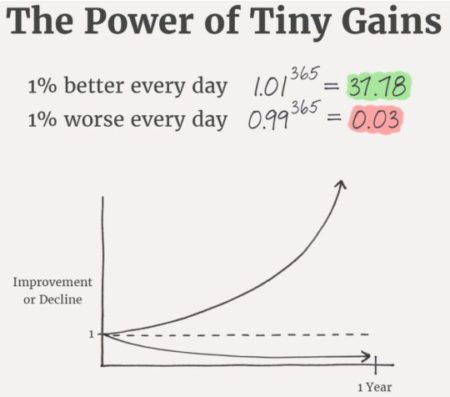
The whole principle came from the idea that if you broke down everything you could think of that goes into riding a bike, and then improved it by 1%, you will get a significant increase when you put them all together – Dave Brailsford
The power of compounding married with the fact that there’s as much (if not more) life ahead of us as is behind builds a really strong case to become a much better version of yourself. Bonus, being better improves lives of others around you.
I tried to follow this rule and ensure that I make almost every day count by exercising (Cult, Ahoy!) / writing / learning something new.
While conventional wisdom says that diversification is the key to investing success, some of the best investors, like Warren Buffett & George Soros have spoken about the virtues of making concentrated bets.
Wide diversification is only required when investors do not understand what they are doing – Charlie Munger
Be it investing, career or relationships, most gains are to be made by focusing on few things and giving them all the effort (think Power Law). I’ve seen quite a few people trying to spread out too thin and not achieving anything substantial. I feel it makes sense to focus your energies on limited ideas & people and double down on them
Caveat: Avoid Ruin
PS: It’s quite likely that investing more time/effort on your career/startup will yield bigger returns than stocks/mutual funds etc.
Optionality in investments refers to the right to do something, but not necessarily the obligation to do so. Just like in investing you can build optionality into your life and exercise them for better outcomes. Collecting high-quality options is the equivalent of unlocking doors that open up to new possibilities.
While on the surface this might look conflicting to the above mentioned point of being concentrated, in reality they work best together. Optionality in asymmetric bets (limited downside, high potential upside) across domains can be built with just small % of resources (time/money etc).
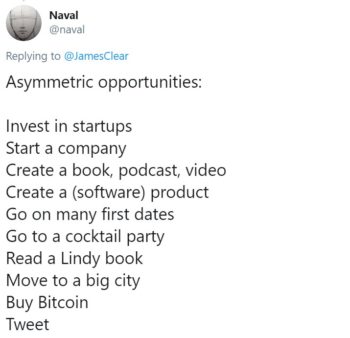
Few things I did to increase optionality
Wishing you all a wonderful and enriching 2020 🙂